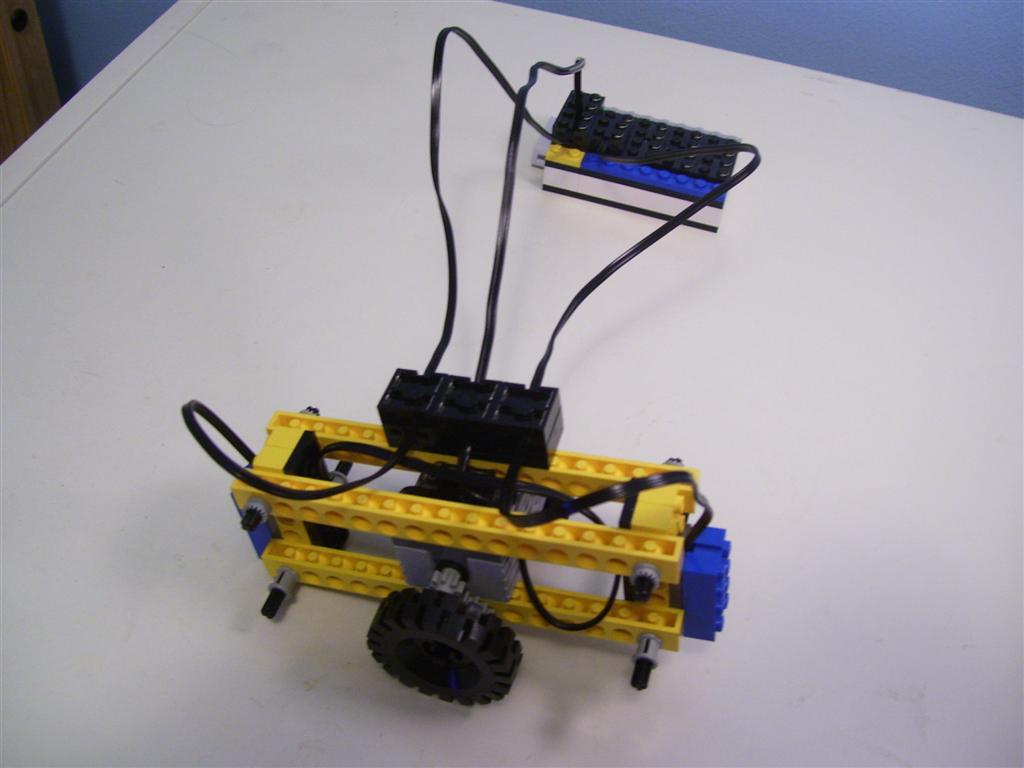Balancing Device - Construction Manual
Device Description
The device consists of a frame and a Lego motor balanced on a single axle
with two wheels. At each end of the frame is a Lego sensor that faces
towards the ground. Each sensor measures its distance from the ground
based on the reflection of a built in LED. The closer the sensor is to the
ground, the more light it senses, the higher the value it reports. By
examining the values of both sensors, the device can determine if it is
tilting in one direction or another and rolls in the direction that will
correct that tilt.
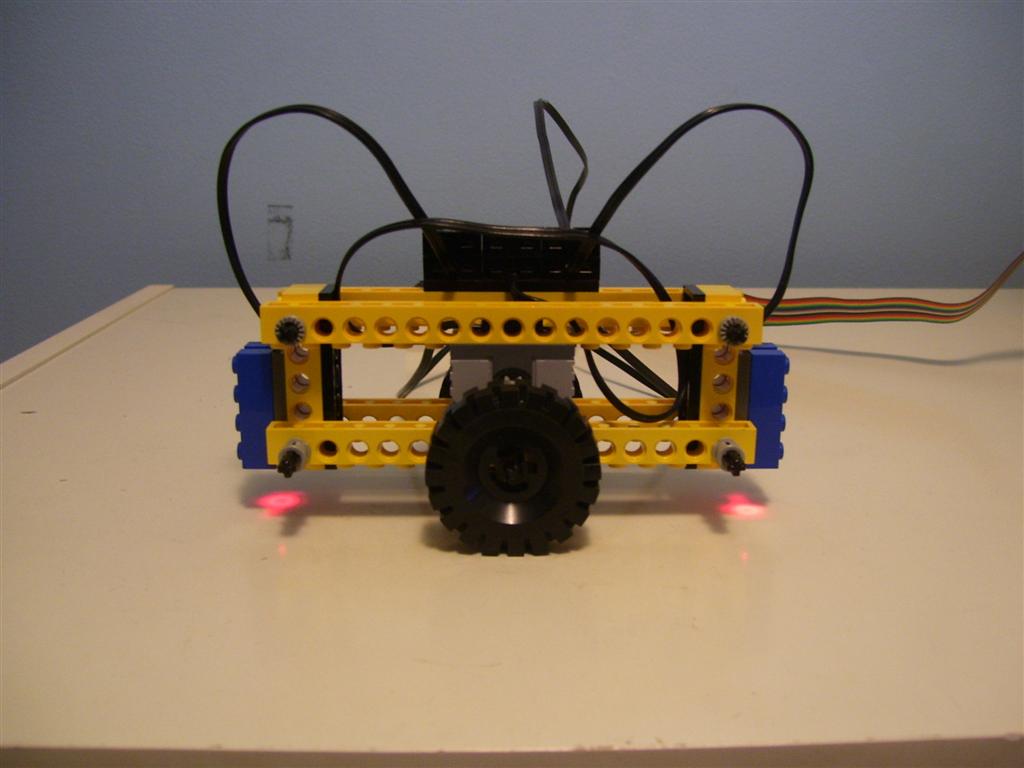
Parts List
To build the balancing device you will need the following parts which can
be found in your Lego kit:
- 4x - 256mm cable
- 2x - sensors
- 1x - basic motor (1420 RPM)
- 1x - 4 point beam
- 4x - 6 point beams
- 4x - 16 point beams
- 4x - 6 point axles
- 1x - 12 point axle
- 3x - 2x6 plates
- 8x - full size bushings
- 1x - 24 point gear
- 1x - 8 point gear
- 2x - tires/hubs
|
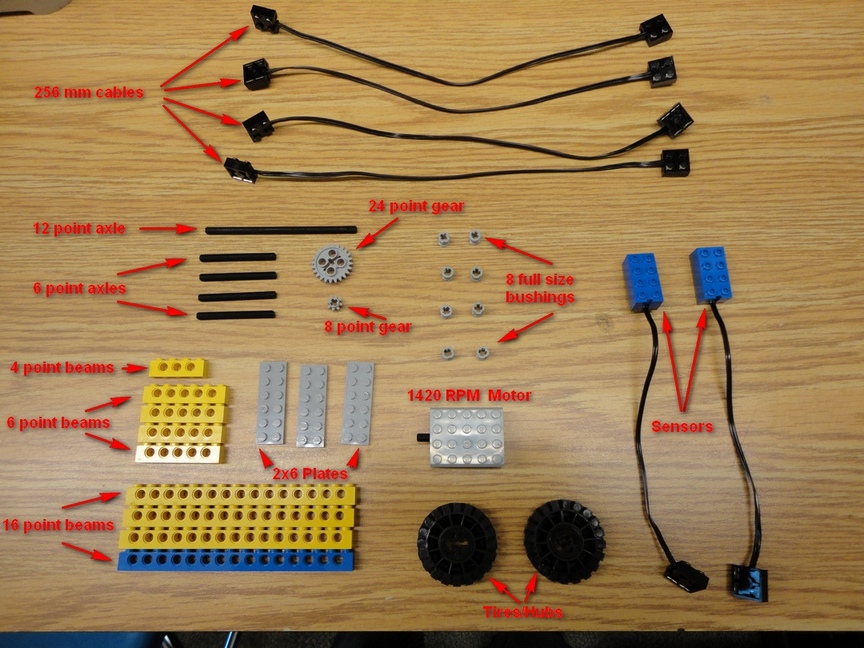
|
Building the Device
Follow these instructions to build your balancing device. Keep in mind
that the device should be physically symmetric about the axle of the motor
so that it can balance.
The Frame
-
Attach two 12 point beams to the motor so they extend evenly on both
sides. Note: the rightmost beam is not flush with the back of the motor.
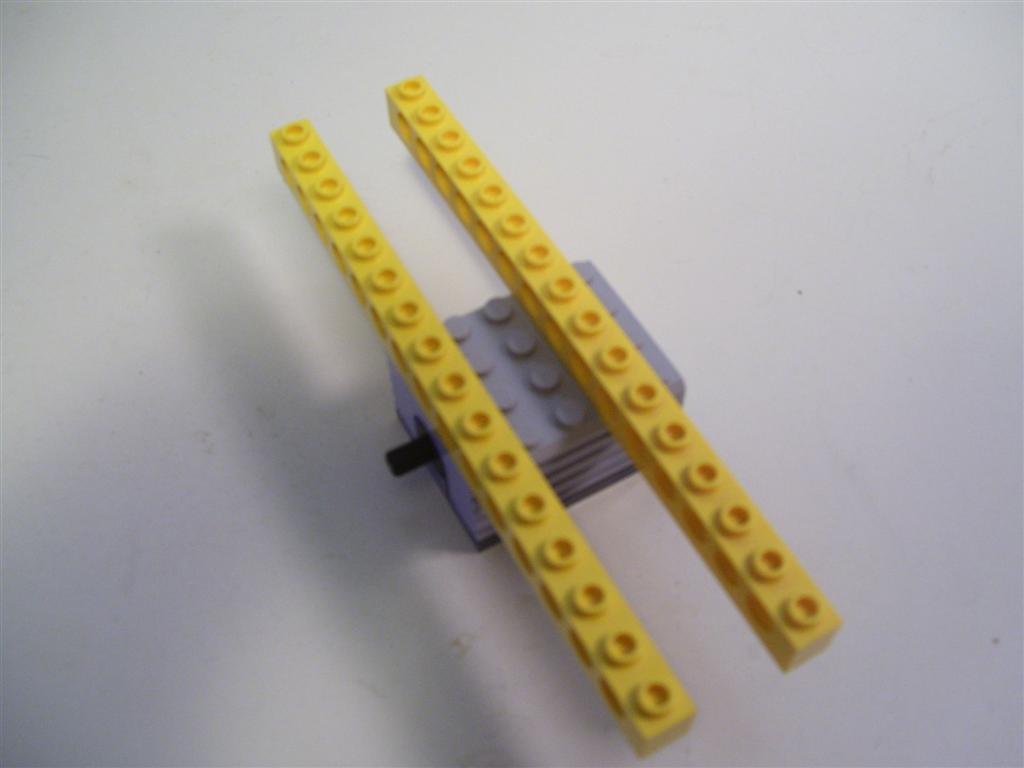
-
Flip the device over. attach two more 12 point beams directly above the
first two beams. Attach one 4 point beam as shown.
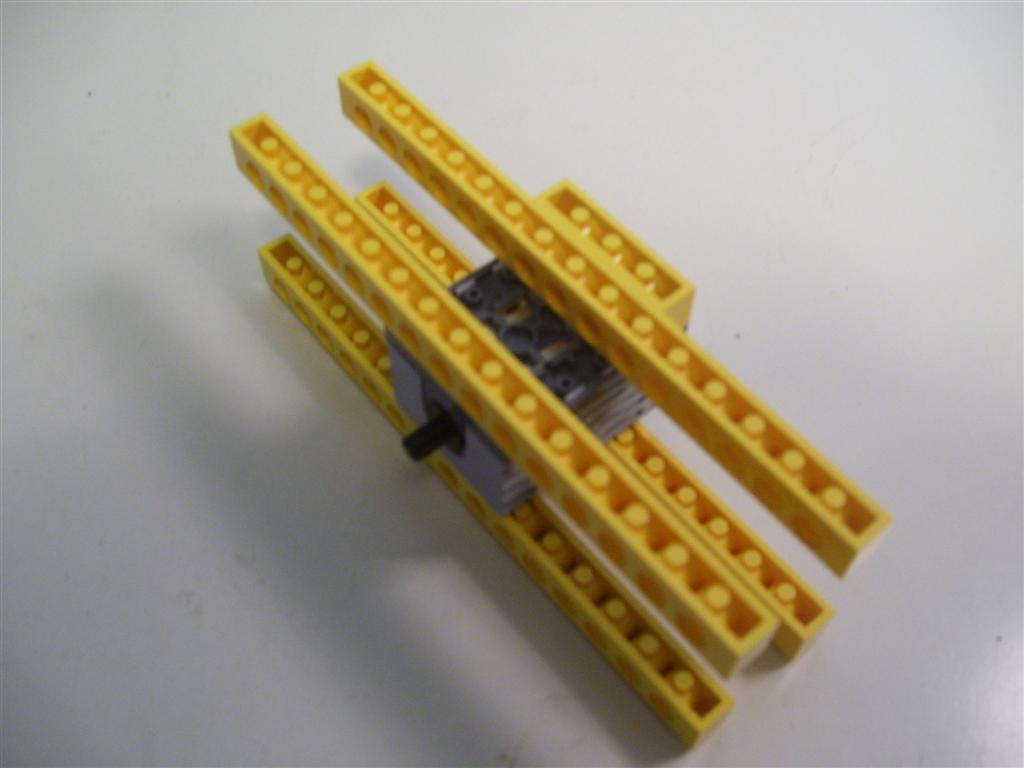
-
Attach one 2x6 plate evenly over the 12 point and 4 point beams.
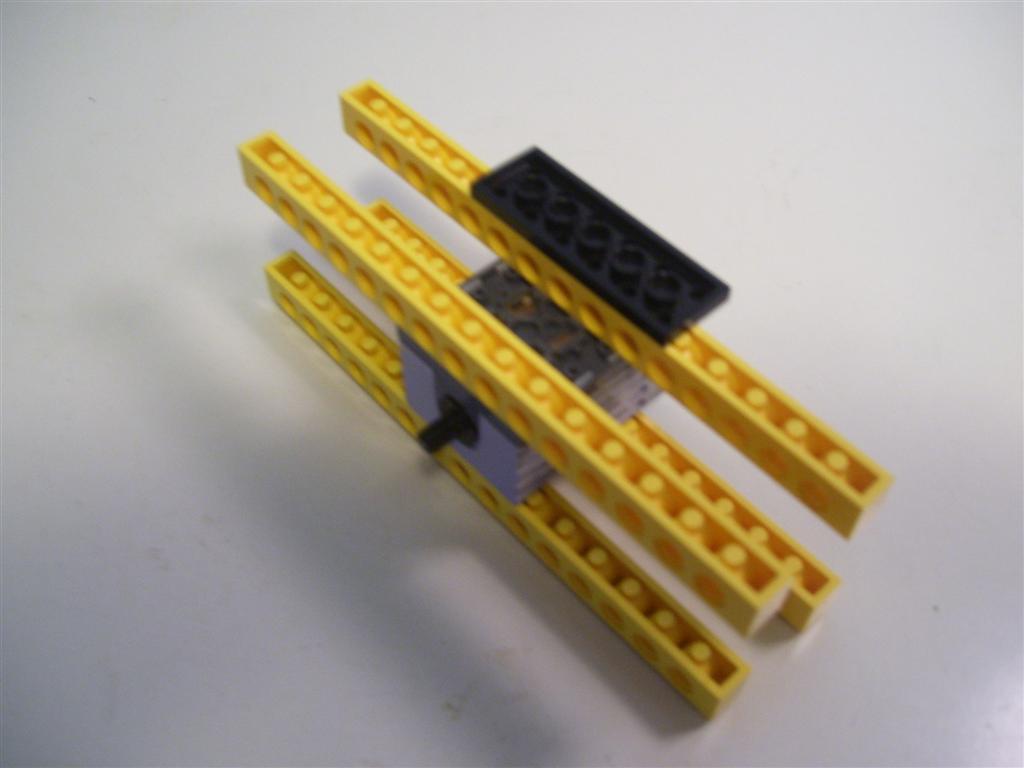
-
Attach one end of a 256mm cable to the two metal contacts on the motor.
Attach the other end to the center of the 2x6 plate as shown.
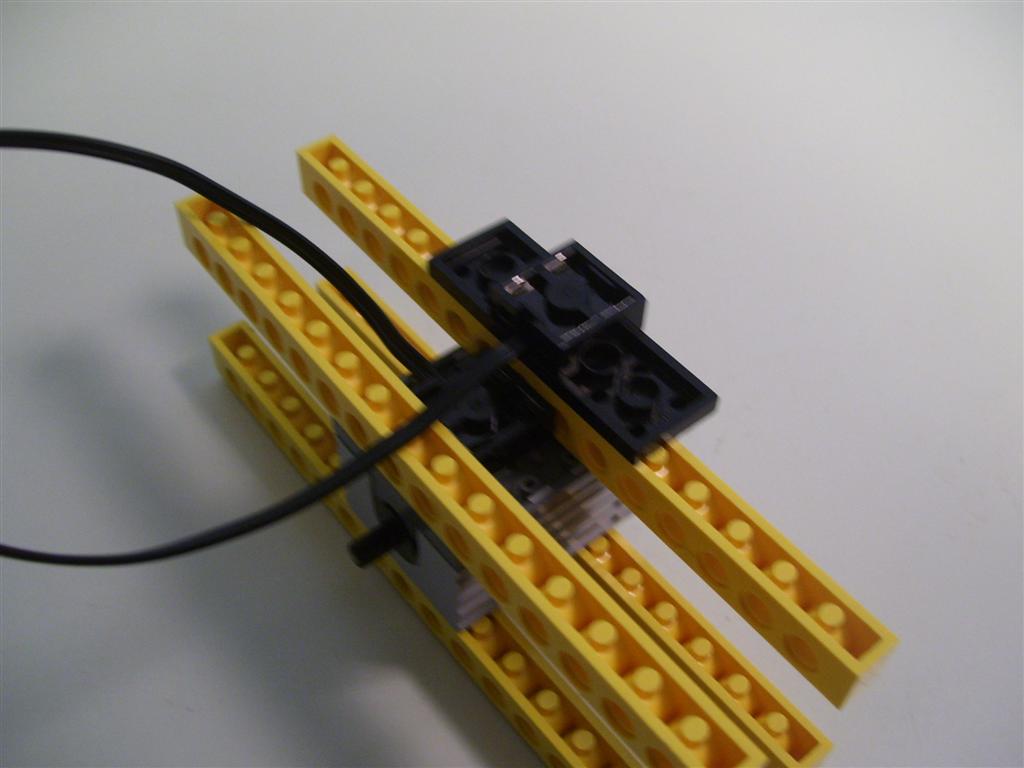
The Sensor & Mounting Block
-
Start with a 2x6 plate.
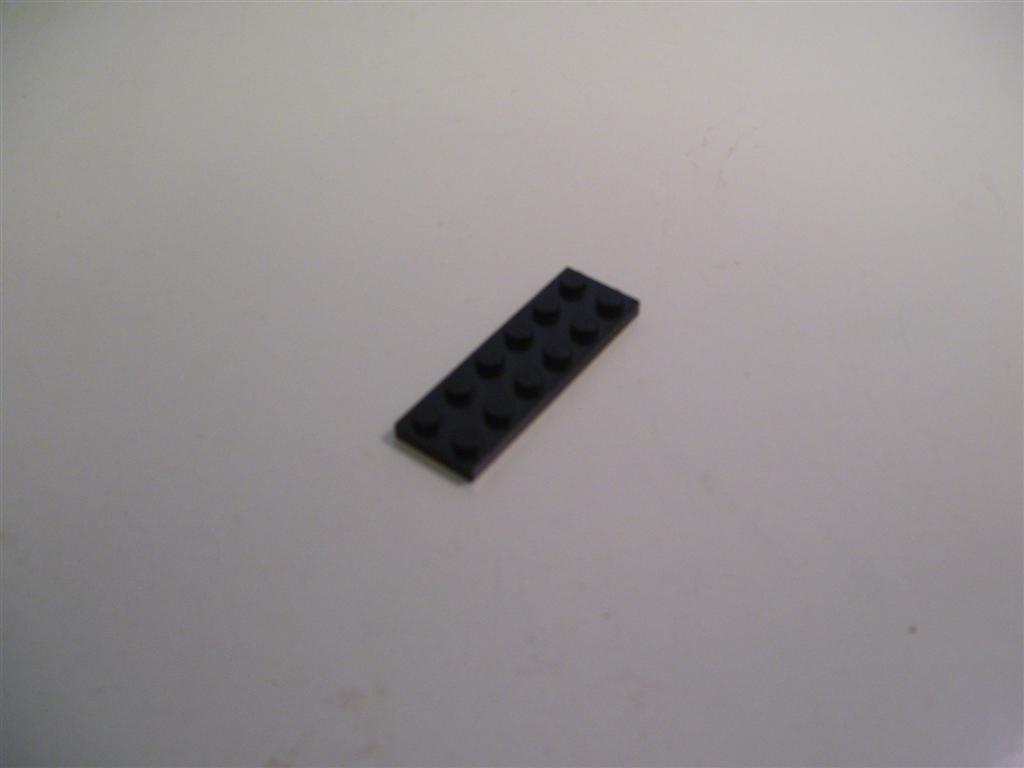
-
Attach two 6 point beams.
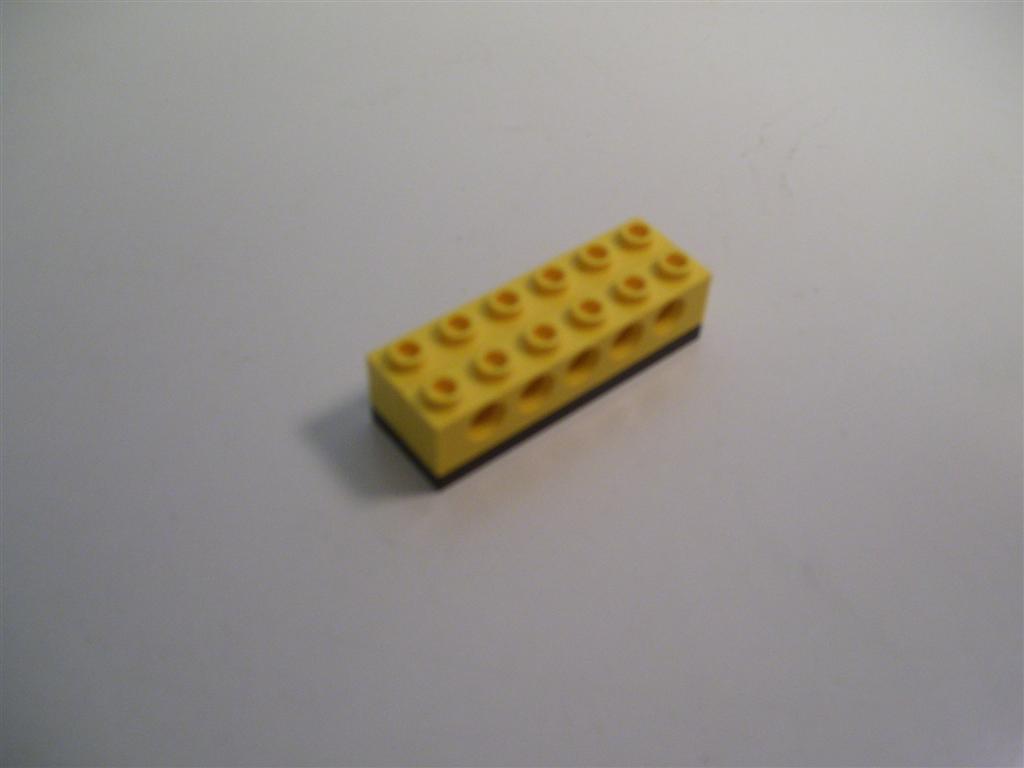
-
Attach a sensor.
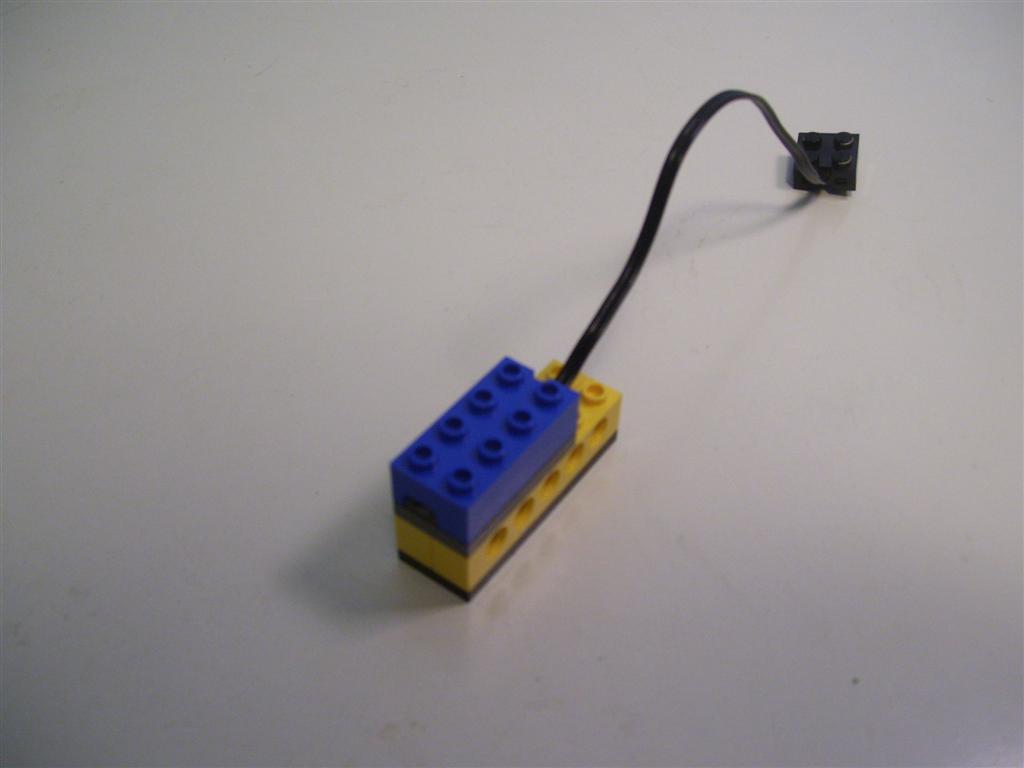
-
Build another sensor mounting block, repeat steps 5-7.
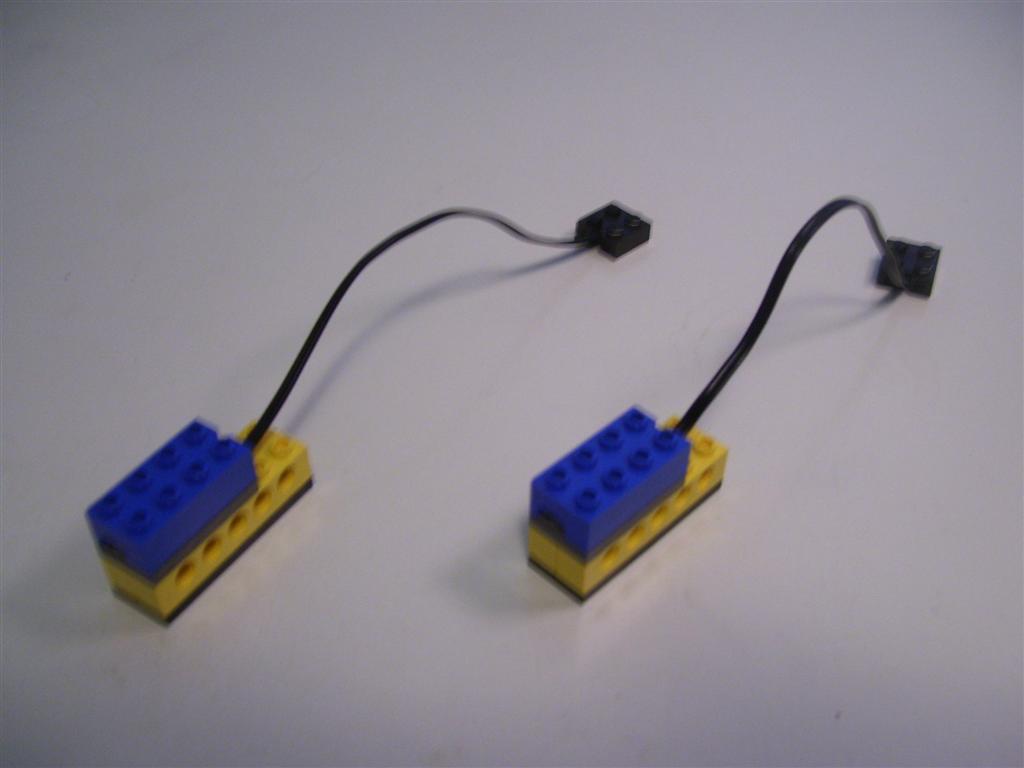
Mounting the Sensors
-
-
Place one sensor between the beams at the end of the frame so all
the holes align. Insert one 6 point axle through the bottom holes of
the frame and sensor mounting block. Secure the axle with two full
size bushings.
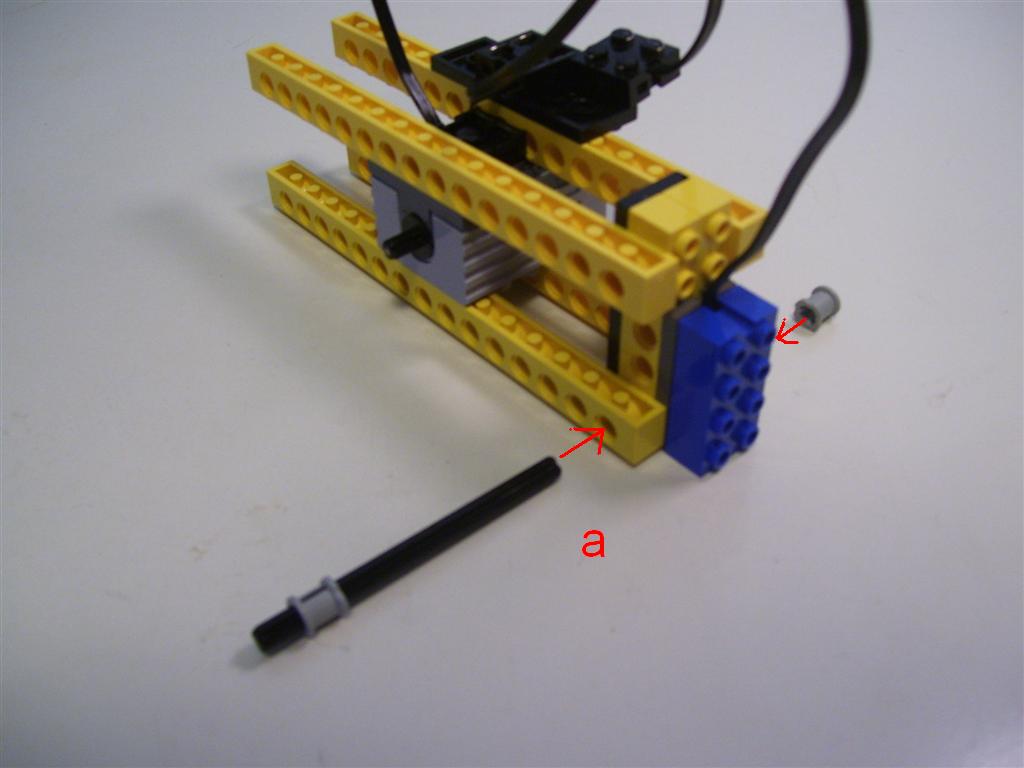
-
Attach the sensor cable to the 2x6 plate next to the motor cable.
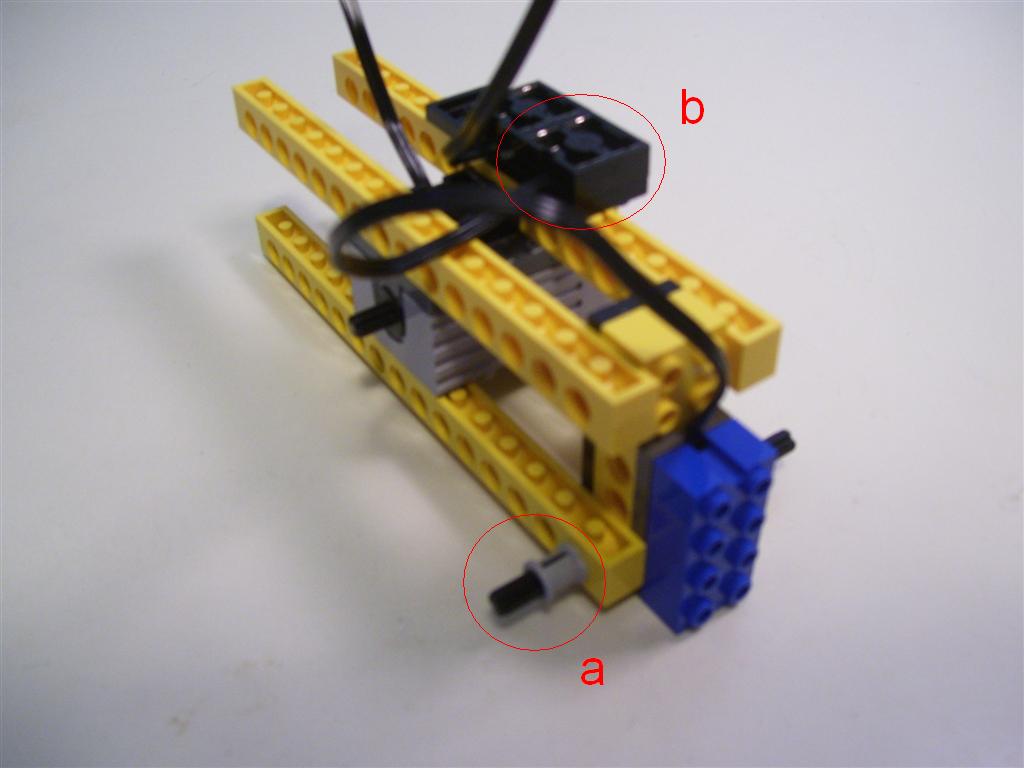
-
Insert one 6 point axle through the top holes of the frame and sensor
mounting block. Secure the axle with two half sized bushings.
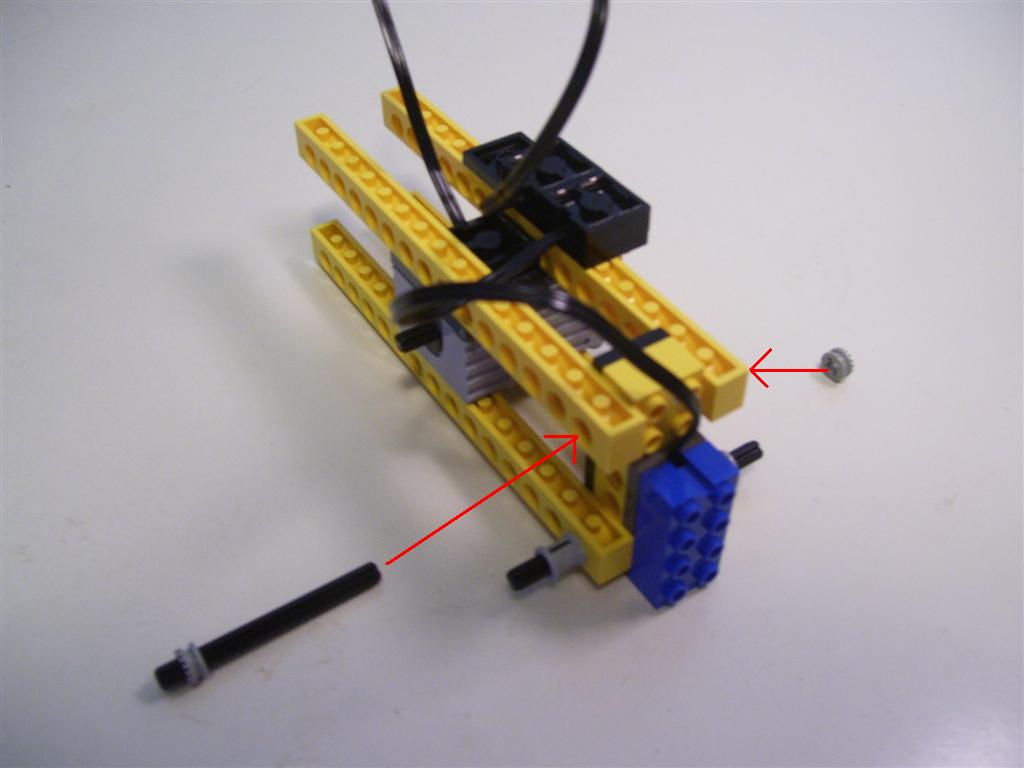
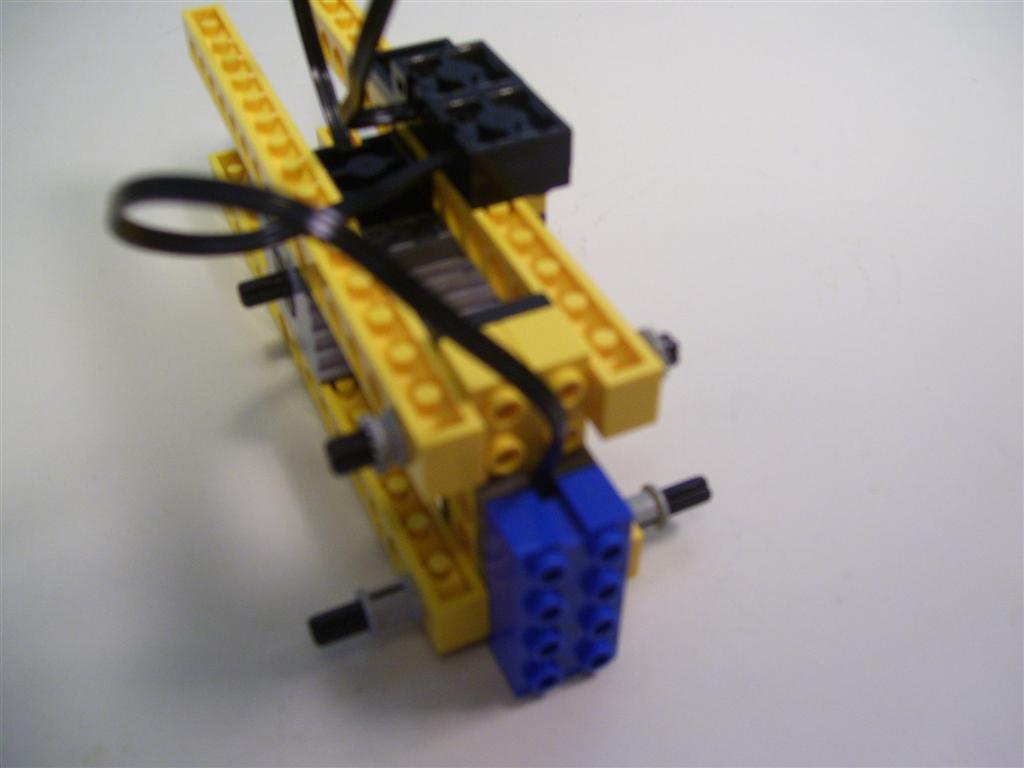
-
Attach the other sensor. repeat steps 9-10. Verify that your device
looks like the picture below.
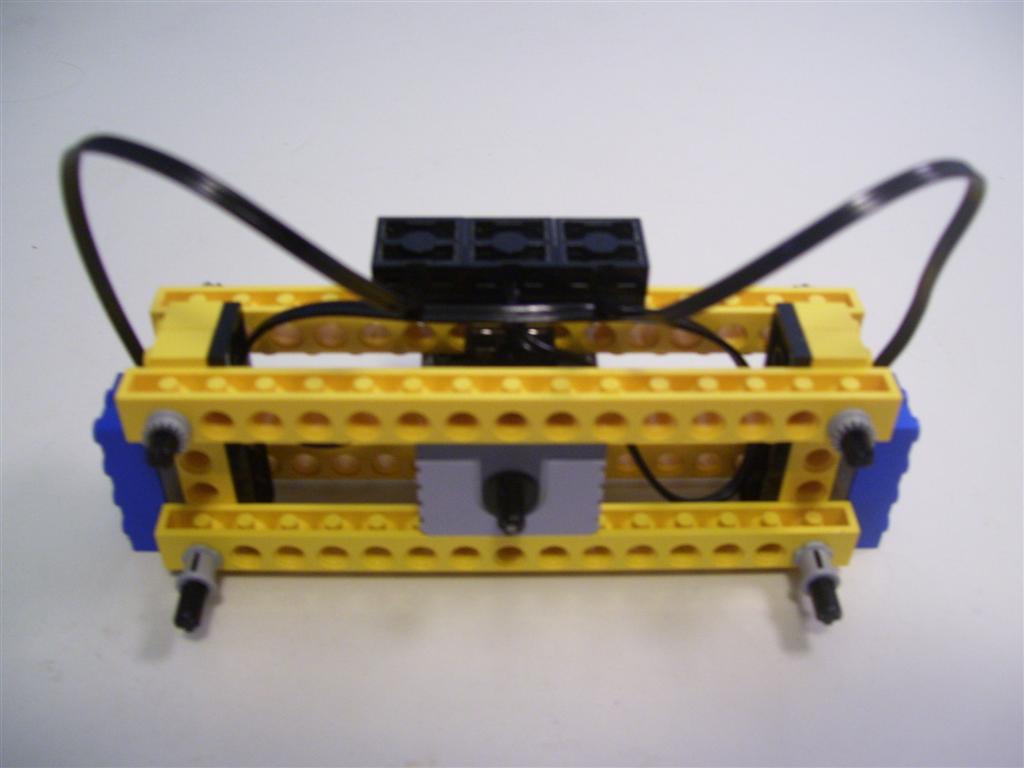
Attach the Wheels
-
Flip the device over.
-
Attach the 8 point gear to the motor.
-
Insert the 12 point axle into the center holes of the top two
beams. Attach the 24 point gear to the axle, make sure it engages
the 8 point gear.
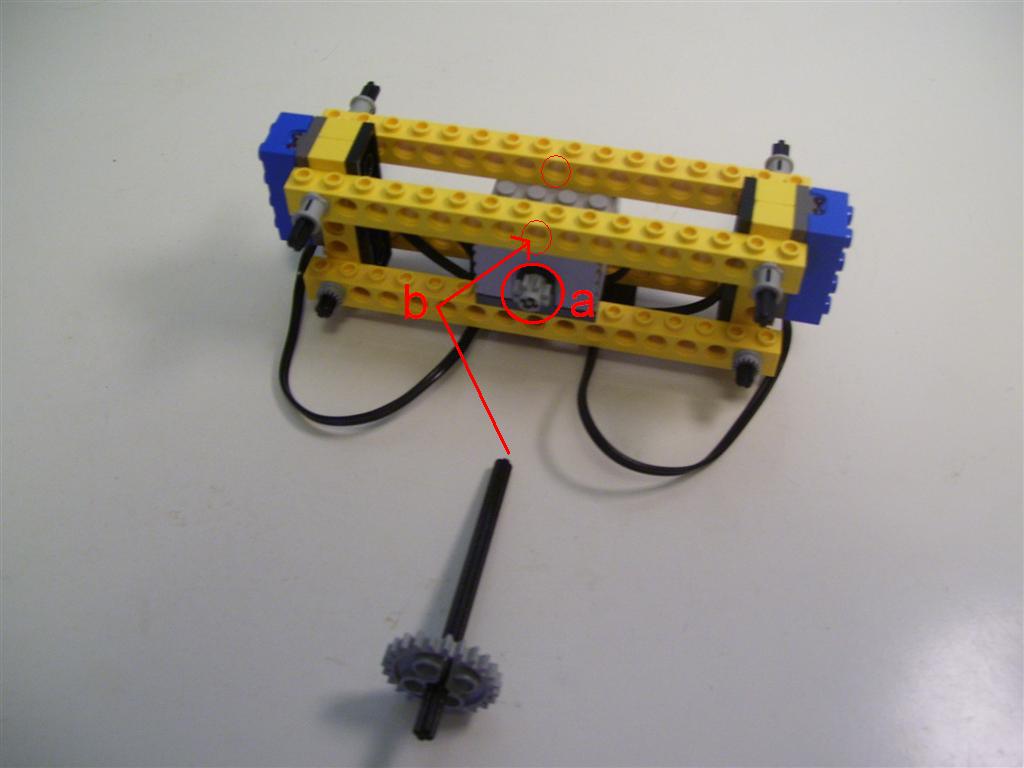
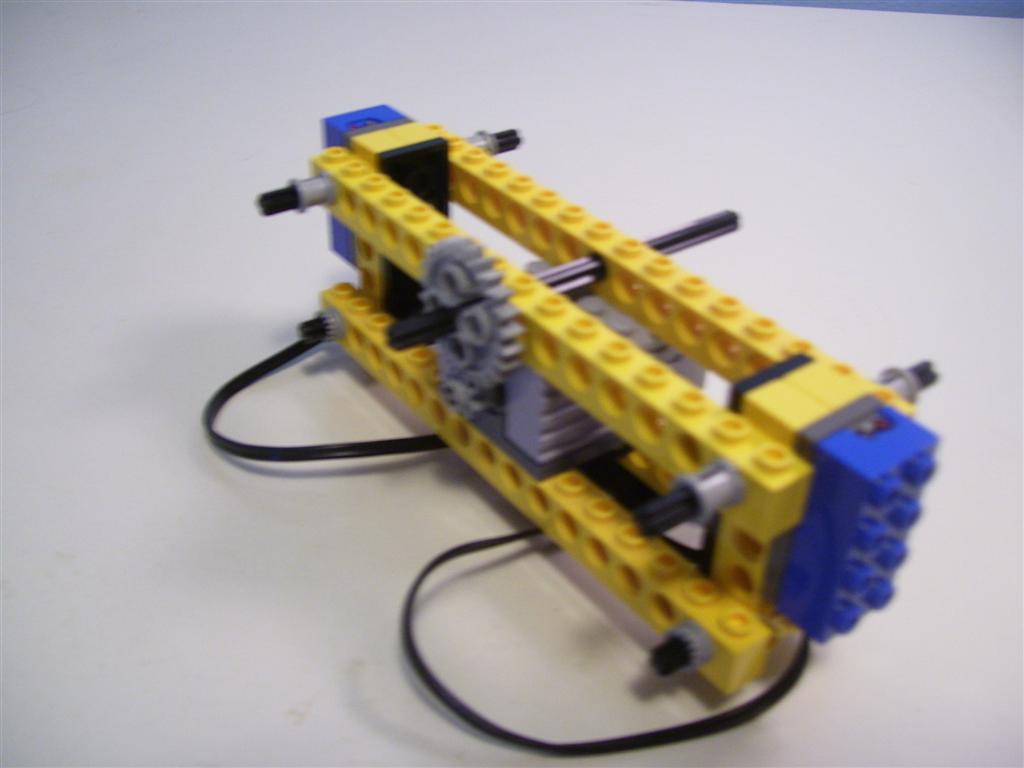
-
Attach a wheel to either side of the 12 point axle. Make sure the
wheels are not tight against the frame such that they cause
resistance. Also make sure the wheels are not so far apart that the
gears can become disengaged.
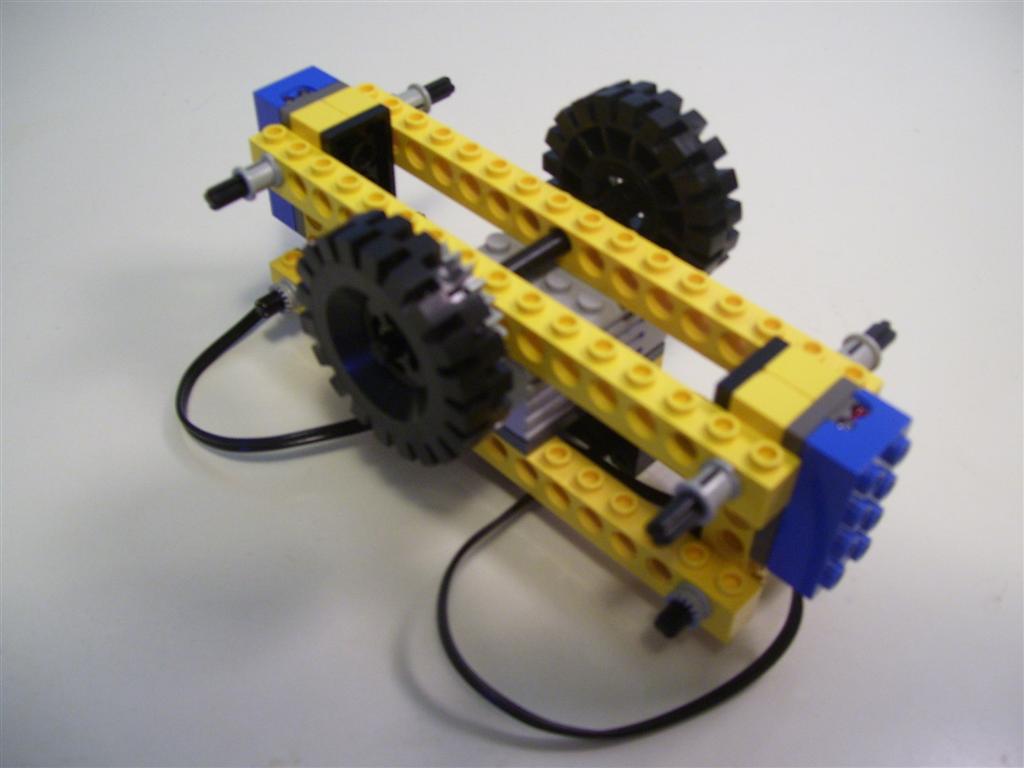
The Finished Device
Flip the device over. Make sure your device looks like the one pictured
below.
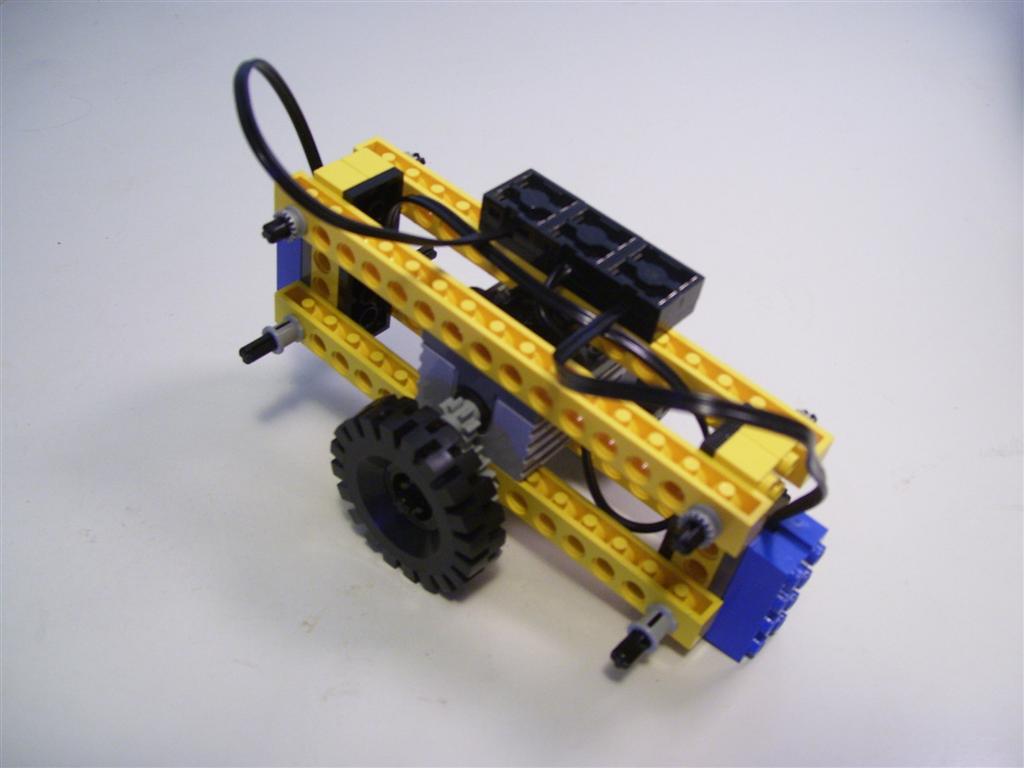
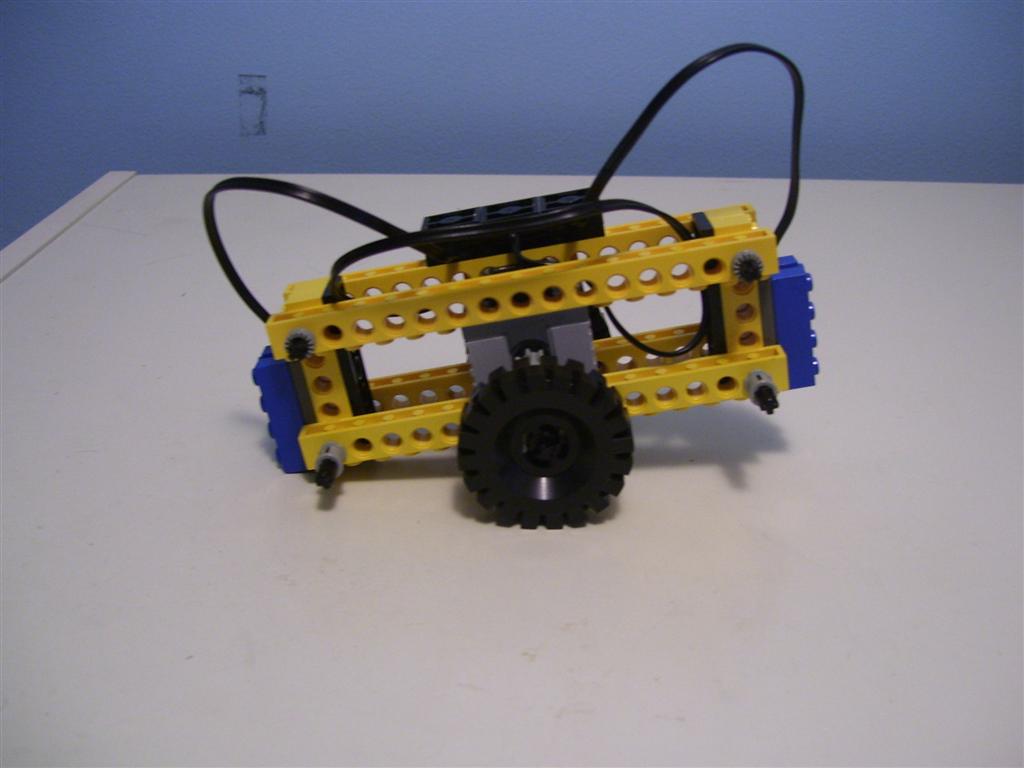
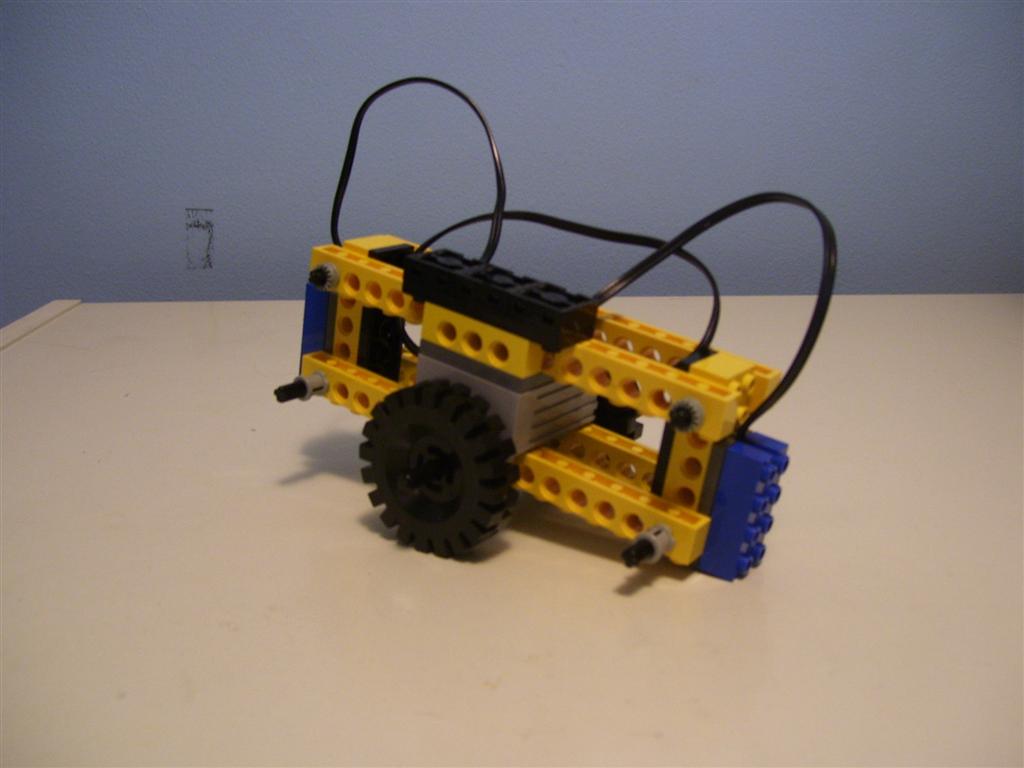
Connecting to the Breakout Box
Now, use the other three 256mm cables to connect the motor and sensors to
the breakout box. NOTE: you will want to keep the cables parallel to the
axle, and give the cables a bit of slack. This is to make sure the wires
don't affect the balance of the device.
